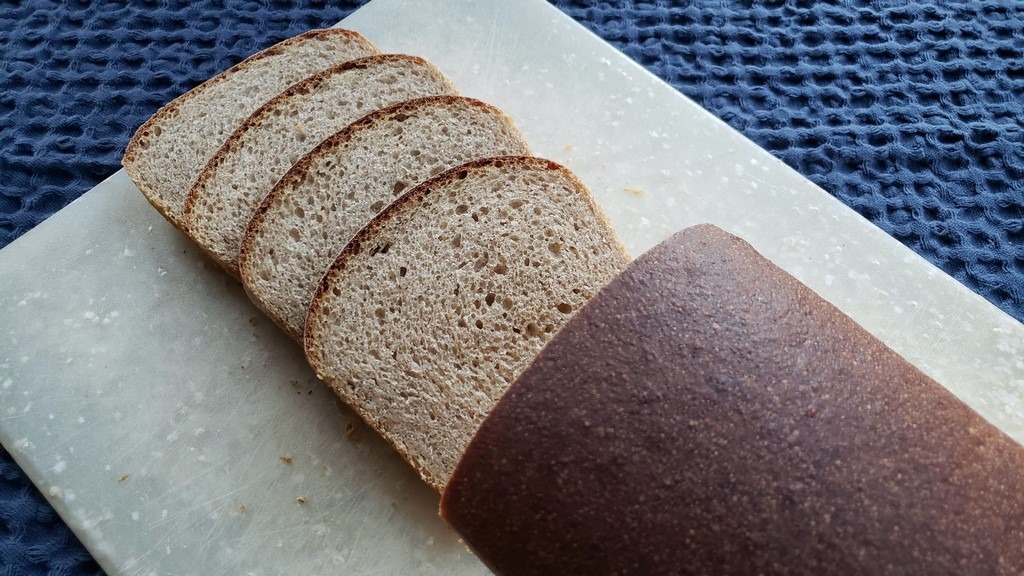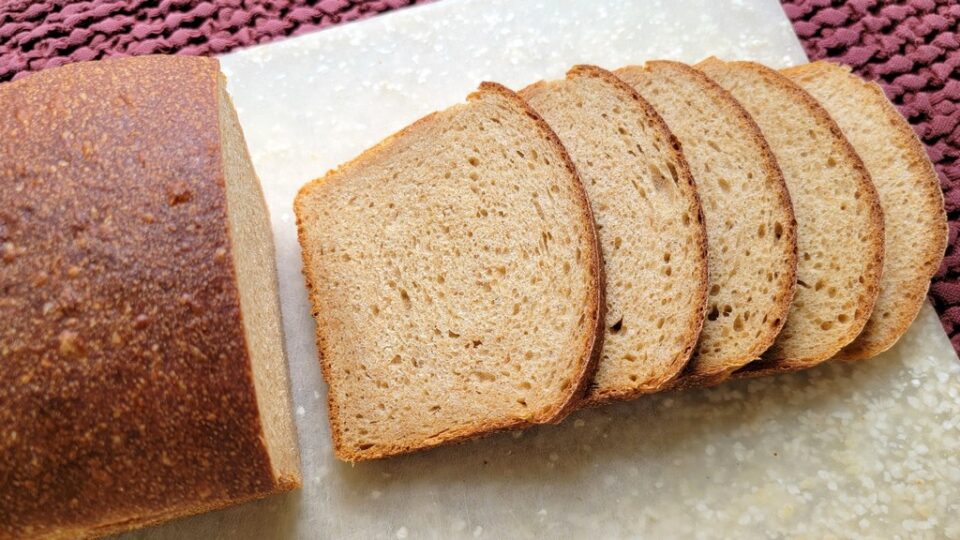Einkorn wheat is the first form of cultivated wheat. The cereals are small in color and dark gold and the flavor is slightly sweet and hazelnut. An All-Enykorn dough can be sticky enough due to the low gluten resistance of this wheat, but it can still produce a delicious loaf and even an independent handmade bread. When you combine Einkorn wheat with a stronger flour, for example bread flour in the recipe below, you get that only delicious Einkorn flavor and a gummy and curved bread that works well for sandwiches.

Ekinn flour and flour
In this recipe, we use this same formula and mix-and-and-abandon strategy as our vegan leavening dough, but replaced Einkorn flour for writing. (The color of the crust is darker in the bread written at the bottom because it was not covered with aluminum sheet during the last 10-15 minutes of cooking.)

Polle for sandwich vegan comparison
This recipe uses an average pan of the United States, which is 9 x 5 x 2.75 inches. If you have a pan of size and you are not sure how to change the size of the loaf, check: how to resize a recipe.
If you want to see how this same dough Einkorn has been accidentally too fermented to more than triple and then transformed into focaccia, check: can this dough be saved?

Same dough transformed into focaccias and rolls
See the Photo gallery After the recipe for photos before and after mass fermentation and the final test.
Einkorn natural yeast sandwich

Soft, rich in nuts and slightly spicy, this Einkorn natural yeast sandwich offers the delicious flavor and the nutrients of Einkorn’s wheat and the easy handling and flexible consistency of bread flour. Bonus: it is also so easy to make with All-in mixing and additional gluten development is not necessary.
Total time
1 hour, 20 minutes
Ingredients
- 265 grams of Einkorn wholemeal flour (2 cups)
- 265 grams of bread flour (2 cups)
- 330 grams of milk or milk substitute (1 1/3 of cups + 1 tablespoon) *See notes
- 100 grams of starting natural leavening (~ 1/3 cup)
- 30 grams of agave, maple syrup or honey (1 1/2 spoon)
- 24 grams of oil (2 tablespoons)
- 12 grams of salt (2 teaspoons)
Instructions
- With lively natural leavening appetizer and hot temperatures, this recipe can be completed in one day. The first increase (doubling) of my dough employed 5 and a half hours at 78-80 ° F. The final test-see the photo gallery for the expansion of the target-voucher would request 1-2 hours at these hot temperatures. I chose to refrigerate my dough during the night. He needed a few more hours at room temperature the next morning for ridge on the edge of the pan.
- Heat the milk from the refrigerator temperature to 80-90 ° F.
- Add the ingredients in a bowl or in a mixer with the pasta hook and mix for 3-5 minutes. The dough will be soft but should combine quickly and wrap the hook.
- Put in a bowl and cover. Use a straight wall container if you have one and score the initial height of the dough.
- Let the dough increases until the size has doubled. My dough needed 5 and a half hours to 80 ° F.
- Lightly flour the work surface and scrape the dough on it.
- Flatten the dough in a rectangle of about 7×10 inches. If it is very loose, fold and flatten again.
- Starting from one of the short sides, roll the dough into a tube and let it rest on the seam. It should be a little shorter than the pan.
- Lightly hears the loaf pan and place the dough inside, seaming down.
- Cover and try for 2-5 hours, depending on the room temperature. You can also delay the dough in the refrigerator. The dough is ready to cook when it is doubled or created on the lip of an average pan (9 x 5 x 2.75 inches).
- Put your oven platform on the second position from the bottom and preheat the oven at 350 ° F for about 15 minutes. Positioning the pan on a lower shelf will help the basis of the bread to cook efficiently and not be dense.
- Brush the upper part of the loaf with the milk and put the pan in the oven.
- Cook for 50-55 minutes, until the inside of the loaf is greater than 190 ° F. Cover the bread for the last 10-15 minutes of cooking if it turns out that it is too golden. If you want the sides of the loaf to be stopped, you can remove it from the pan and put it directly on the oven grid for this last part of the cooking.
- Remove the bread from the pan and cool on a grill for at least an hour before cutting.
- Once completely cooled, keep the bread in a bag, a box or beeze wax casing to keep it soft.
Notes
* I had oat milk at hand but you can use cow’s milk or other milk. The fermentation seems to be a little faster with oat milk, perhaps due to the highest protein content.


